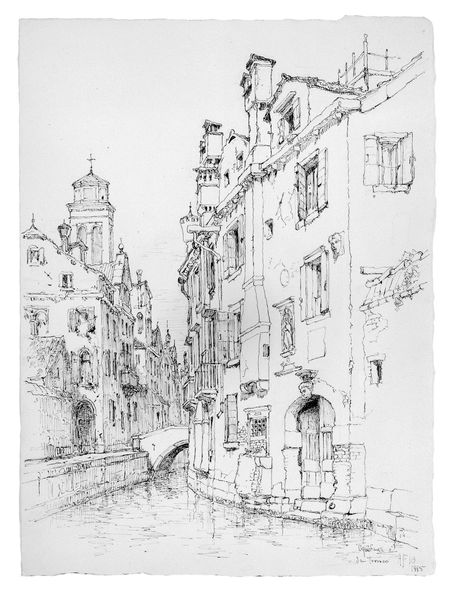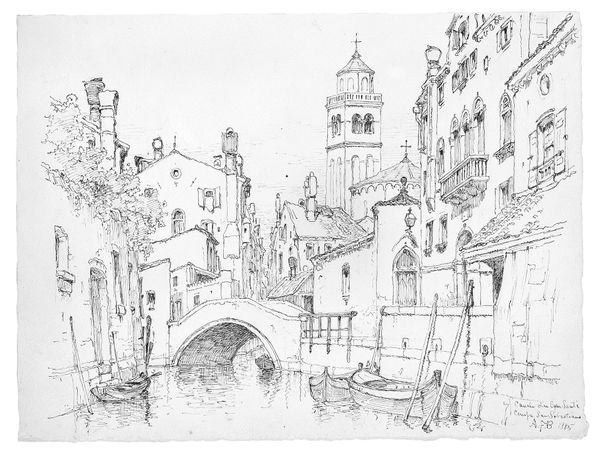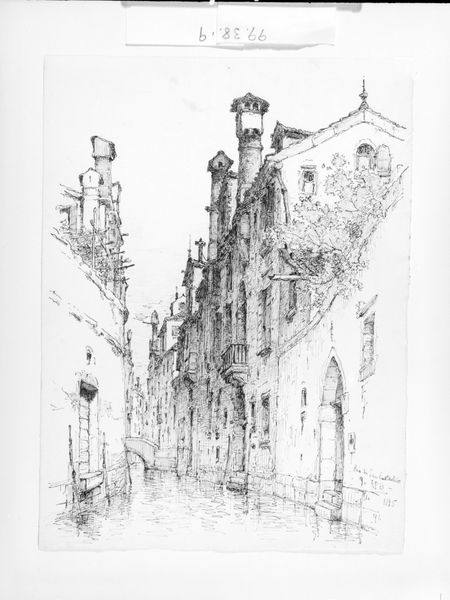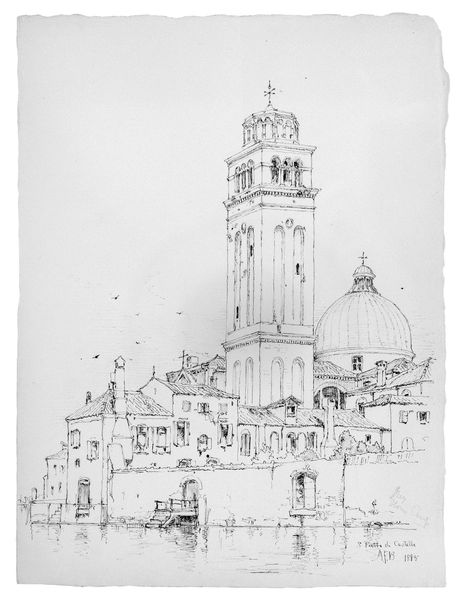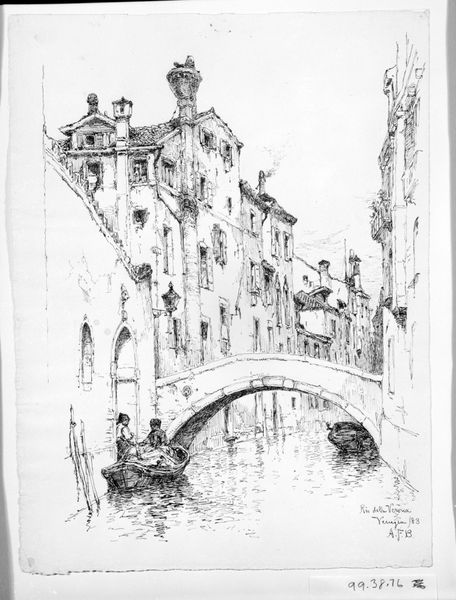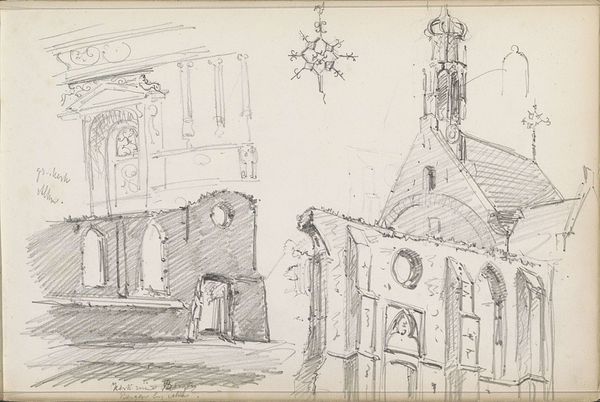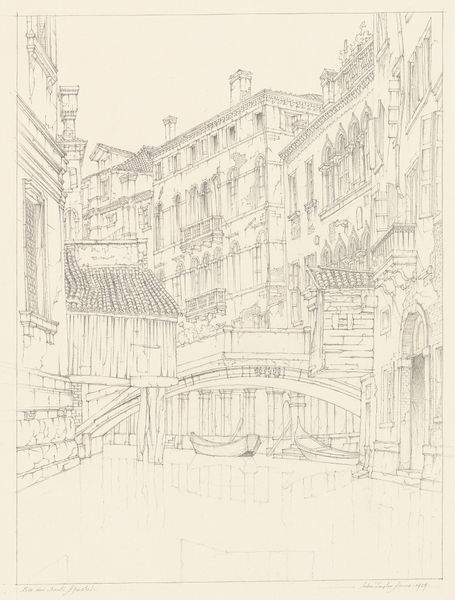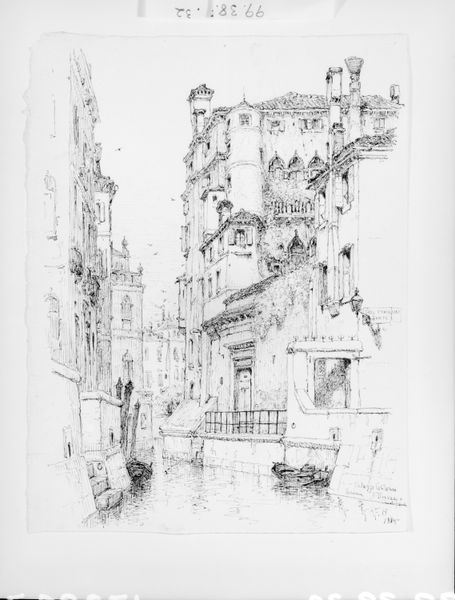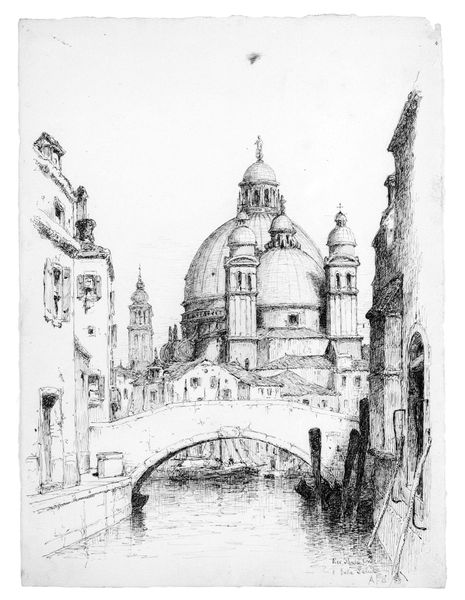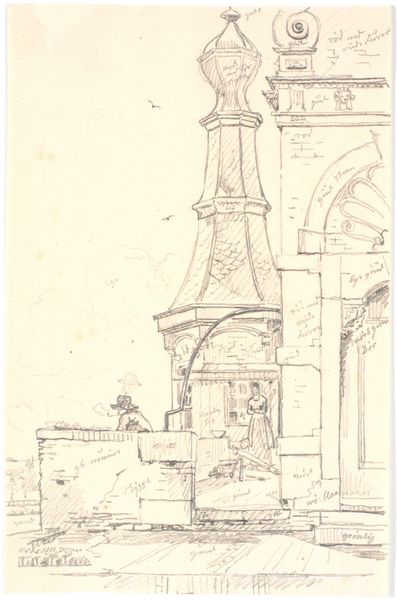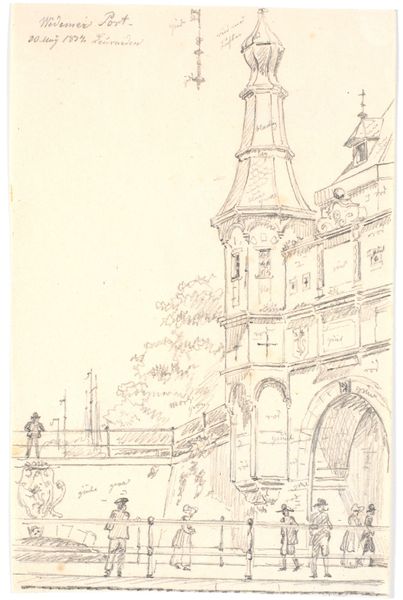
Dimensions: 12 5/16 x 9 5/16 in. (31.3 x 23.7 cm)
Copyright: Public Domain
Curator: Andrew Fisher Bunner created this delicate pen and ink drawing, titled "San Barnabas e Carmine, Venice" in 1885. It’s currently part of the collection at the Metropolitan Museum of Art. Editor: My first thought is, it feels intensely detailed, almost hyper-realistic given the medium. The texture implied through those tiny strokes is incredible. But it also gives the impression of age; the slight imperfections add a layer of character. Curator: Absolutely. Consider the labour involved in rendering such architectural complexity. The dense linework highlights the intense industrialization, in Venice as a major trade port. And consider how the availability of standardized paper and improved pen designs fostered artistic practice beyond the traditional atelier. Editor: And Venice itself, a city built on water and trade. What kind of stories do these buildings hold? It prompts us to reflect on the ways cities preserve hierarchies – who has access to these spaces, and whose histories are reflected in its monuments? The working class, those who built this place, how were their lives reflected? Curator: Precisely! Look at how the pen lines emphasize the geometry, framing a visual relationship between the built form and the water it stands on. Pen and ink offered Bunner the affordances to dissect his composition and consider its assembly, a method facilitated by new technologies. Editor: There's a sense of transience despite the solidity of the buildings; maybe the lines that give us the city’s history suggest precarity. How were communities impacted by shifts in labour, the arrival of industrialisation? Also how tourism itself transforms lived-in urban space to be a consumable representation of something other than the authentic lived experiences within. Curator: Very interesting how you are bringing in themes of modernity here, since one could even read his labor-intensive drawing as a reaction against mass produced printed images that flooded the European art market in the 19th century. The tactile quality, the emphasis on craft, all push back against a purely mechanical mode of reproduction. Editor: Thank you. For me it underlines how even seemingly "objective" cityscapes reveal as much about the cultural politics as about architecture. Each of these tiny lines acts as a testament of a time now gone. Curator: Well, it makes you wonder about the choices made when it came to artistic labour and how they still matter in understanding how images continue to get created even today. Editor: I completely agree. This image invites us to critically reflect how built spaces exist between materiality, historical traces and a deep sense of social meaning.
Comments
No comments
Be the first to comment and join the conversation on the ultimate creative platform.
